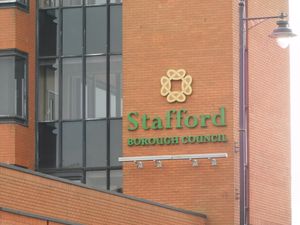Increase in complaints about Stafford Borough Council
The number of complaints to an ombudsman about Stafford Borough Council has increased.

And the number of “stage two” corporate complaints relating to the authority’s development service almost doubled, a council report revealed, from 12 in 2021/22 to 21 in 2022/23, with a further three relating to finance and two in connection with operations.
The authority has previously had a three-stage complaint process, with the first stage being a response by an officer responsible for the service provided. If the complainant was not satisfied with the response it was escalated to stage two to be dealt with by the head of service, with the council’s chief executive becoming involved at stage three if it was escalated further.
In total 18 complaints were escalated to stage three in 2022/2023 – double the number in 2021/22. Of these 13 related to development, three to finance and two to operations.
In 2022/23, 12 complaints about borough council services were investigated by the Local Government and Social Care Ombudsman – up from seven in 2021/22. The Ombudsman will usually only investigate an issue when the complainant is not satisfied with the response given by the chief executive at the final stage of the council’s corporate complaints process, the report to the authority’s resources scrutiny committee said.
The council’s resources scrutiny committee heard at its latest meeting that many complaints relating to development were in response to decisions, which was not what the corporate complaints process was for. But some related to performance of the service – and the complaints procedure itself was revised earlier this year.
Ian Curran, head of law and governance, added: “There will be a change to the corporate complaints process from this April; in the past we didn’t record the nature of complaints that were dealt with at Stage One by the individual department. We feel it is probably more useful for us to understand what complaints are being dealt with at that stage than it is for us knowing it was escalated to the head of service and reviewed by the chief executive.
“With the three-stage complaint system it does cause an inordinate amount of resource issues, often duplicating efforts. The complainant isn’t always satisfied with waiting for that third stage and if it has not been resolved by the head of service they tend to want to go to the Ombudsman, so there isn’t a great deal of experience of the chief executive review resolving complaints to the benefit of the complainants.”
Resources Scrutiny Committee chairman Councillor Mark Winnington said: “The number of complaints, particularly in development control, have doubled over the year. I understand that some of the reasons are superfluous, but it’s something this committee has really got to look at over the next three years to see if we’ve got an improvement.
“It’s something I’ve experienced as a councillor, and I’m sure other people have, that there has been a certain amount of dissatisfaction from residents as to development control. I’ll be watching it as I’m sure the rest of the committee will and we will look forward to the next report.
“I am surprised that we’ve got no process to escalate this to the chief executive. There are certain cases and groups of residents who value the input from the chief executive.
“I think it would be disingenuous to the electorate not to have some route to the chief executive. It would be more useful if they came through members but there are people out there who want to speak to the chief executive.”
Chief executive Tim Clegg responded: “It doesn’t preclude anybody from writing to me if they have a concern – I’m not cutting myself off from it. The Stage 3 part of the complaints process is to review the response that complainants have received from head of service and to make sure the response they have got addressed the issue they were complaining about and whether the response was reasonable.
“It was not to reinvestigate the complaint or challenge whether the answer was right, it was to check whether it was a reasonable response. Having done this for a number of years since the complaints system was last overhauled, I found that we tended to get the more complex complaints where there had been a considerable exchange of views about the complaint.
“Sometimes the complaints were vexatious, sometimes there was just a disagreement about the issue. I found almost without exception, over a period of at least four years, that the processes have been followed well.
“It took an inordinate amount of time to review all the correspondence often. But there was only one occasion I can remember – perhaps two – where we asked the head of service to go back and look at it again.
“It didn’t add a great deal of value but did add a deal of time in terms of the complainants having to wait. The complainants that were not going to be satisfied wanted to go to the Ombudsman and all we were doing was holding them up.”





